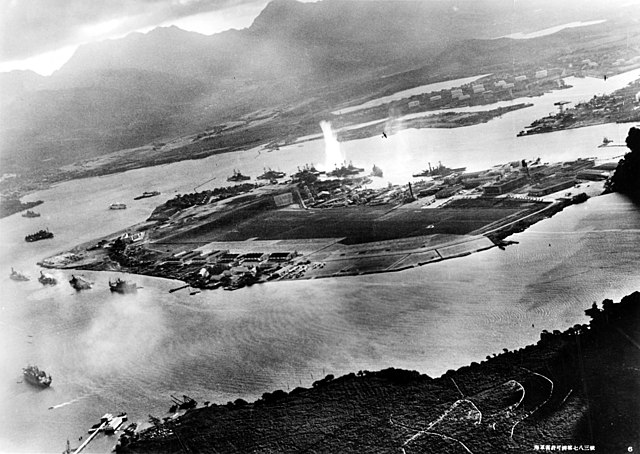The SCR-270 was one of the first operational early-warning radars. It was the U.S. Army's primary long-distance radar throughout World War II and was deployed around the world. It is also known as the Pearl Harbor Radar, since it was an SCR-270 set that detected the incoming raid about 45 minutes before the December 7, 1941, attack on Pearl Harbor commenced.
SCR-270: Similar to the model that detected the attacking Pearl Harbor planes (the actual Opana antenna was nine dipoles high by four wide, instead of the eight-by-four configuration shown here). The scale for reading the direction the antenna is pointing to can be seen at the base.
Non portable version: the SCR-271 at Camp Evans
Plot made early on December 7, 1941, by SCR-270 operators at Opana
SCR-270 display showing Japanese planes approaching Oahu on December 7, 1941
The attack on Pearl Harbor was a surprise military strike by the Imperial Japanese Navy Air Service on the American naval base at Pearl Harbor in Honolulu, Hawaii, in the United States, just before 8:00 a.m. on Sunday, December 7, 1941. At the time, the United States was a neutral country in the World War II conflict. The attack on Hawaii and other U.S. territories led the United States to formally enter World War II on the side of the Allies the day following the attack, on December 8, 1941. The Japanese military leadership referred to the attack as the Hawaii Operation and Operation AI, and as Operation Z during its planning.
Photograph of Battleship Row taken from a Japanese plane at the beginning of the attack. The explosion in the center is a torpedo strike on USS West Virginia. Two attacking Japanese planes can be seen: one over USS Neosho and one over the Naval Yard.
Pearl Harbor on October 30, 1941, a month prior to the attack, with Ford Island visible (in the center)
The Empire of Japan's 1941 attack plan on Pearl Harbor
The route followed by the Japanese fleet to Pearl Harbor and back








